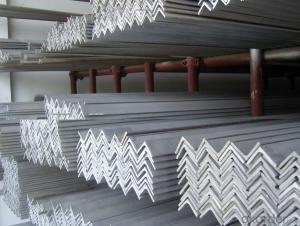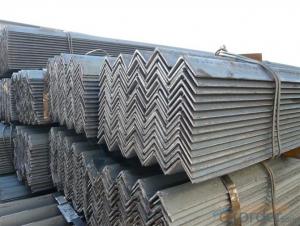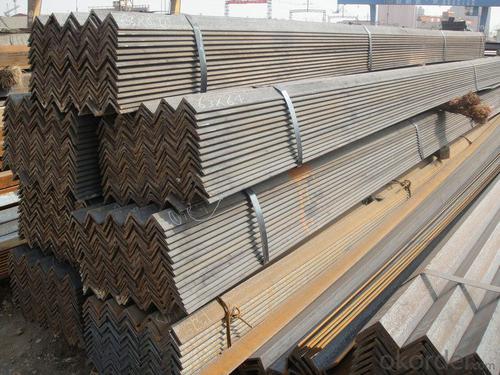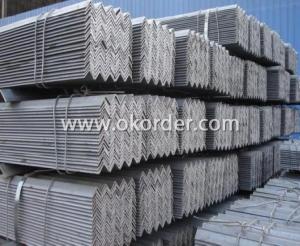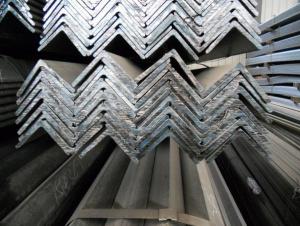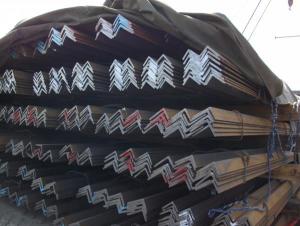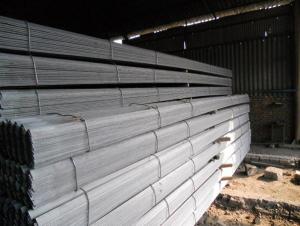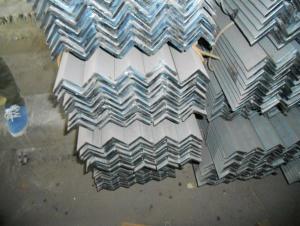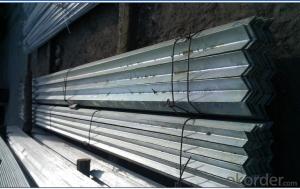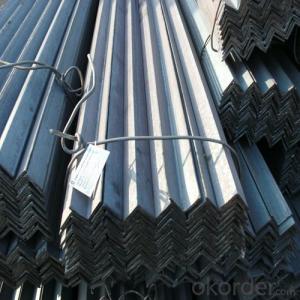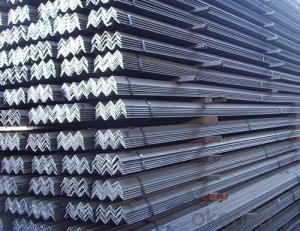Steel Equal Angle with Good Quality 200mm*200mm
- Loading Port:
- Tianjin
- Payment Terms:
- TT OR LC
- Min Order Qty:
- 100 m.t.
- Supply Capability:
- 15000 m.t./month
OKorder Service Pledge
OKorder Financial Service
You Might Also Like
Specification
Specifications of Steel Equal Angle with Good Quality 200mm*200mm
1. Invoicing on theoretical weight or actual weight as customer request
2. Length: 6m and 12m
3. Sizes:
| Size(mm) | Mass(kg/m) | Size(mm) | Mass(kg/m) |
| 200*200*14 | 42.894 | 200*200*20 | 60.056 |
| 200*200*16 | 48.894 | 200*200*24 | 71.168 |
Packaging & Delivery of Steel Equal Angle with Good Quality 200mm*200mm:
1. Packing: it is nude packed in bundles by steel wire rod
2. Bundle weight: not more than 3.5MT for bulk vessel; less than 3 MT for container load
3. Marks:
-Color marking: There will be color marking on both end of the bundle for the cargo delivered by bulk vessel. That makes it easily to distinguish at the destination port.
-Tag mark: there will be tag mark tied up on the bundles. The information usually including supplier logo and name, product name, made in China, shipping marks and other information request by the customer.
If loading by container the marking is not needed, but we will prepare it as customer request.
FAQ:
Q1: Why buy Materials & Equipment from OKorder.com?
A1: All products offered byOKorder.com are carefully selected from China's most reliable manufacturing enterprises. Through its ISO certifications, OKorder.com adheres to the highest standards and a commitment to supply chain safety and customer satisfaction.
Q2: How do we guarantee the quality of our products?
A2: We have established an advanced quality management system which conducts strict quality tests at every step, from raw materials to the final product. At the same time, we provide extensive follow-up service assurances as required.
Q3: How soon can we receive the product after purchase?
A3: Within three days of placing an order, we will begin production. The specific shipping date is dependent upon international and government factors, but is typically 1 to 2 months.
Q4: How many tons per bundle?
A4: Around 2-3tons
Q5: How many tons can be loaded into one 20ft container?
A5: Around 23—25tons(6m)
Q6: How many tons can be loaded into one 40ft container?
A6: Around 23—25tons(12m)
Q7: How to avoid the rust after deliver the goods to the loading port?
A7: We will keep the goods at the port covered with water-proof material
Production flow of Steel Equal Angle with Good Quality 200mm*200mm:
Material prepare (billet) —heat up—rough rolling—precision rolling—cooling—packing—storage and transportation
Images of Steel Equal Angle with Good Quality 200mm*200mm:
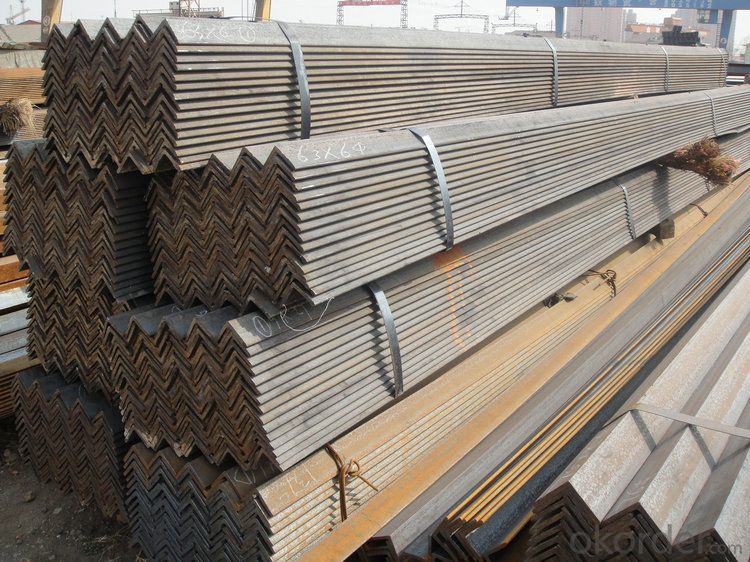
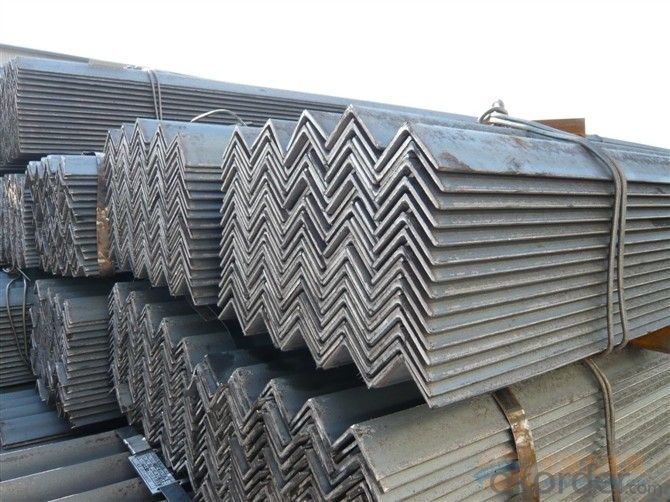
- Q: How do you measure the dimensions of a steel angle?
- To determine the dimensions of a steel angle, a combination of tools such as a measuring tape or ruler, a protractor, and a square can be used. Begin by measuring the length of one side of the angle using a measuring tape or ruler. Position the tape or ruler along the side of the angle and observe the measurement. Subsequently, measure the length of the other side of the angle in the same manner. Ensure that the starting point is the same as the first side for precise results. For measuring the angle itself, employ a protractor. Align the protractor's base with one side of the angle and verify that the other side corresponds to the appropriate degree marking on the protractor. Consult the protractor's reading to ascertain the angle of the steel angle. Lastly, a square can be utilized to confirm if the angle truly measures 90 degrees. Place the square against the two sides of the angle and confirm that it perfectly aligns with both sides. If alignment is achieved, then the angle is, indeed, 90 degrees. Please bear in mind that these measurements may be approximate and could slightly differ due to manufacturing tolerances.
- Q: How are steel angles defined?
- Steel angles are defined based on the length of their legs, thickness, and their shape, which is typically L-shaped. These angles are commonly used in construction and engineering applications for structural support and framing purposes.
- Q: Can steel angles be used for machine guards?
- Indeed, machine guards can utilize steel angles as a viable option. Renowned for their robustness and endurance, steel angles find prominent usage within the construction sector. These angles can be effortlessly manipulated and affixed to form a protective enclosure around machinery, effectively safeguarding workers and averting mishaps. The adaptability of steel angles permits tailoring to accommodate diverse machine dimensions and configurations. Moreover, steel angles exhibit commendable resistance against impacts and can withstand substantial burdens, rendering them apt for employment in machine guarding endeavors.
- Q: Can steel angles be used in the construction of hospitals?
- Yes, steel angles can be used in the construction of hospitals. Steel angles are versatile and commonly used in various construction projects, including hospitals. They provide structural support, reinforcement, and are often used for framing, bracing, and connecting different components of a building. Steel angles offer strength, durability, and fire resistance, making them suitable for hospital construction where safety and stability are crucial.
- Q: Can steel angles be used as framing members in buildings?
- Yes, steel angles can be used as framing members in buildings. Steel angles are commonly used in construction as a structural element for framing, bracing, and supporting various components of a building. They offer excellent strength, durability, and load-bearing capacity, making them suitable for a wide range of applications in building construction. Steel angles can be used to create rigid frames, trusses, and connections, providing stability and support to the structure. Additionally, they can be easily welded, bolted, or connected using other fastening methods, allowing for flexible and efficient construction. Overall, steel angles are a versatile and reliable choice for framing members in buildings.
- Q: Can steel angles be used for stair treads?
- Yes, steel angles can be used for stair treads. Steel angles, also known as angle irons, are commonly used in construction and fabrication due to their strength and durability. When used as stair treads, steel angles provide a sturdy foundation for individuals to step on and walk up or down the stairs. The angled shape of the steel angles allows for better weight distribution and increased stability. Additionally, steel angles can be easily welded or bolted to the stair stringers or supports, making them a convenient and reliable choice for stair treads.
- Q: What are the different load-carrying capacities for steel angles?
- The load-carrying capacities of steel angles can vary due to different factors such as angle size, shape, steel type, and specific use. Typically, these capacities are determined by considering the maximum stress or load that an angle can bear without permanent deformation or failure. This is usually expressed as the maximum axial or bending load that the angle can support. To find the load-carrying capacity of a specific steel angle, engineers and structural designers refer to industry standards like the AISC Manual of Steel Construction. These standards provide tables and formulas that consider the angle's dimensions, thickness, and moment of inertia to calculate its load-carrying capacity. It's important to note that load-carrying capacities for steel angles are specified for specific loading conditions and safety factors. These factors include the type of load, direction and magnitude of the applied load, and the safety factor necessary for structural integrity and durability. Therefore, it's crucial to consult relevant codes, standards, and engineering resources to determine the specific load-carrying capacity of a steel angle for a particular application. Professional structural engineers and designers have the expertise and familiarity with design codes and standards to assess and determine these capacities accurately.
- Q: What is the typical length of a steel angle?
- The typical length of a steel angle can vary depending on its purpose and application. However, in most cases, the standard length of a steel angle is typically 20 feet or 6 meters. This length allows for easy handling, transportation, and installation in various construction and fabrication projects. However, it's worth noting that steel angles can be cut or customized to shorter lengths to meet specific requirements or fit certain designs.
- Q: What is the minimum bend radius for a steel angle?
- The minimum bend radius for a steel angle depends on various factors such as the thickness of the angle, the type of steel, and the specific application. However, generally speaking, the minimum bend radius for a steel angle is typically equal to or slightly larger than the thickness of the angle itself.
- Q: Can galvanized square tubes and angle iron be welded together?
- Yes, if the requirement is not high, it can be welded directly. If the requirement is high, the zinc coating on the galvanized square pipe can be polished off before welding, and then welded. However, two kinds of welding methods, welding well, must be carried out at the weld corrosion. Now there is a special coating for hot-dip galvanizing on the market. It is characterized by high zinc content and 96% zinc content. It can provide similar anticorrosive effect to hot-dip galvanizing for repairing parts.
Send your message to us
Steel Equal Angle with Good Quality 200mm*200mm
- Loading Port:
- Tianjin
- Payment Terms:
- TT OR LC
- Min Order Qty:
- 100 m.t.
- Supply Capability:
- 15000 m.t./month
OKorder Service Pledge
OKorder Financial Service
Similar products
Hot products
Hot Searches
Related keywords

